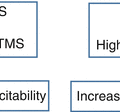© Springer International Publishing AG 2018
Stefano Masiero and Ugo Carraro (eds.)Rehabilitation Medicine for Elderly PatientsPractical Issues in Geriatricshttps://doi.org/10.1007/978-3-319-57406-6_1717. Taking Charge of the Lower Limb Amputee Patient: Evaluation Measures, Scales, and the Clinical Approach
(1)
Santa Lucia Hospital, Neurorehabilitation Unit, Rome, Italy
17.1 Taking Charge of the Patient
A patient-centric, interdisciplinary approach is mandatory for amputee rehabilitation. Team should integrate physicians, nurses, physical, and occupational therapists, prosthetists, psychologists, and dieticians with the objective to regain function and independence to the amputee. Patients and family members must take an active role in the process and are consulted in decisions about therapeutic and prosthetic options [1].
17.2 Clinical Evaluation
During the first evaluations, the rehabilitative team has to take into account the following aspects:
- 1)
The cause of the amputation. In general people with an amputation due to dysvascular problems are aged and with comorbidity, while traumatic or neoplastic amputees have more phantom limb pain and psychologic disturbances [2].
- 2)
The period of the patient’s bed rest before and after the surgical treatment. The longer is this period, more severe are the complications due to hypo-mobility and muscle-tendon retraction. In particular, the shortening of the hip flexor muscles (for transfemoral and transtibial amputations) and the knee flexor muscles (for transtibial amputations). Moreover the detraining status could interfere with the conditioning exercises and the first attempts to stand up the patient [2].
- 3)
The cognitive status and the heart/respiratory condition. Learning how to use the prosthesis, and the use itself, in particular for transfemoral amputees, needs collaboration and clinical stable conditions. The energy cost of walking for a transfemoral amputee is much higher than healthy people, and this may led to breathlessness and rejection of the prosthesis usage [3].
- 4)
The residual limb condition. Only when the surgical wound is healed and the edema is greatly reduced, it will be possible to fit the first prosthesis [2].
17.3 Pre-prosthetic Training
The first objective is to increase motor ability without the prosthesis and increase the self-awareness and the acquisition of new motor competencies.
During pre-prosthetic rehabilitation the following factors are crucial:
Good global reconditioning
Training of the trunk muscles and respiratory functions
Increase of joint mobility and core stability
Training to achieve autonomy in transferring and postural changes
Residual limb evaluation through visual inspection and palpation should highlight signs and symptoms of possible complications: skin breakdown, bone stump complications, proximal joint contractures, pain (musculoskeletal, neuromas or nerve entrapment, phantom limb), and edema. We recommend an X-ray examination of the stump with its proximal joint [1].
The objective of the pre-prosthetic phase is to prepare the residual limb and the entire body to support the locomotor abilities in the prosthesis phase. The main steps of the pre-prosthetics phase can be summarized as follows [4]:
- 1)
Exercises to increase range of motion of proximal joint, balance competencies with growing level, proprioceptive rehabilitation with tactile, somatosensory, and pressure stimulation to achieve a new body schema
- 2)
One leg standing inside parallel bars should be started as soon as possible. Sound limb walking training and balance training inside parallel bars. Exercises to increase coordination and resistance, possibly without hand support, to increase participation to activities of daily living
- 3)
Training for independence during transfer from bed to wheelchair
Stay updated, free articles. Join our Telegram channel

Full access? Get Clinical Tree




